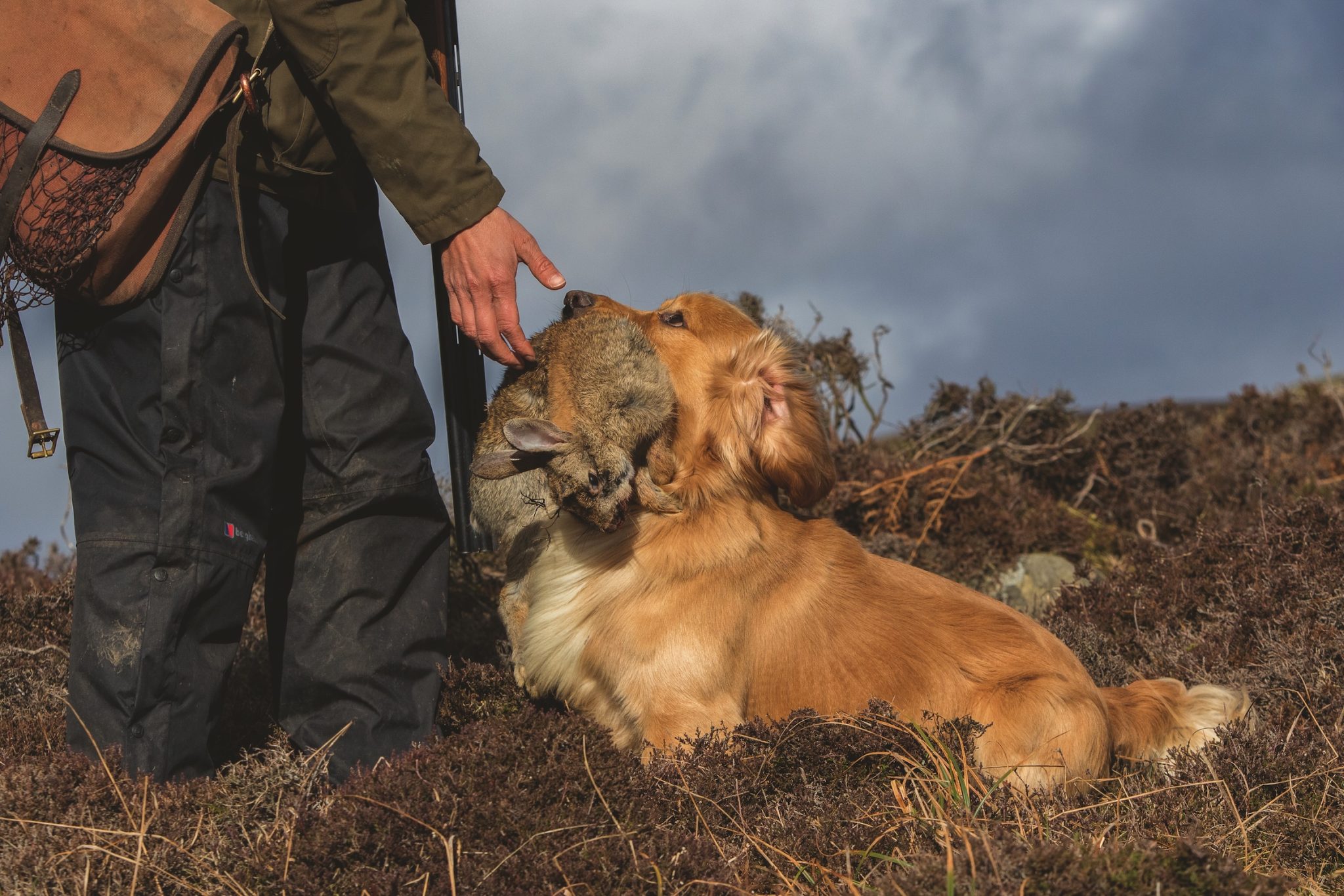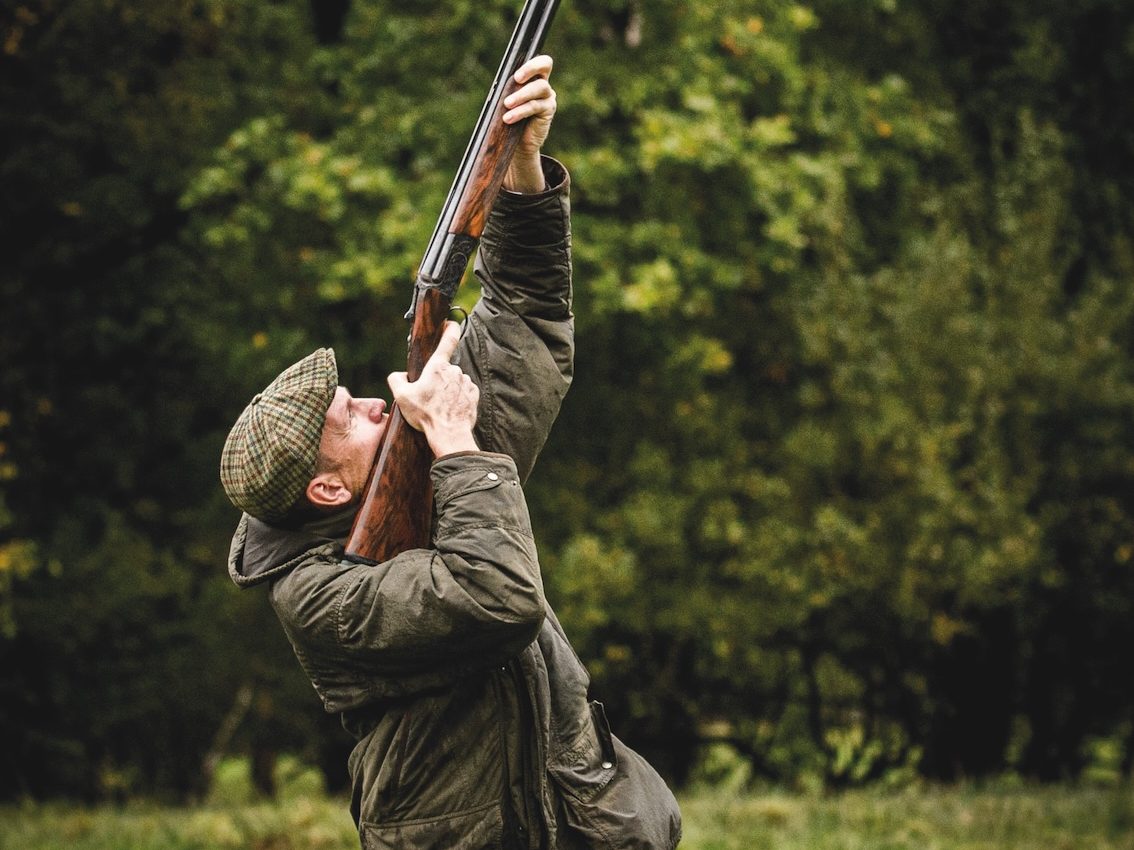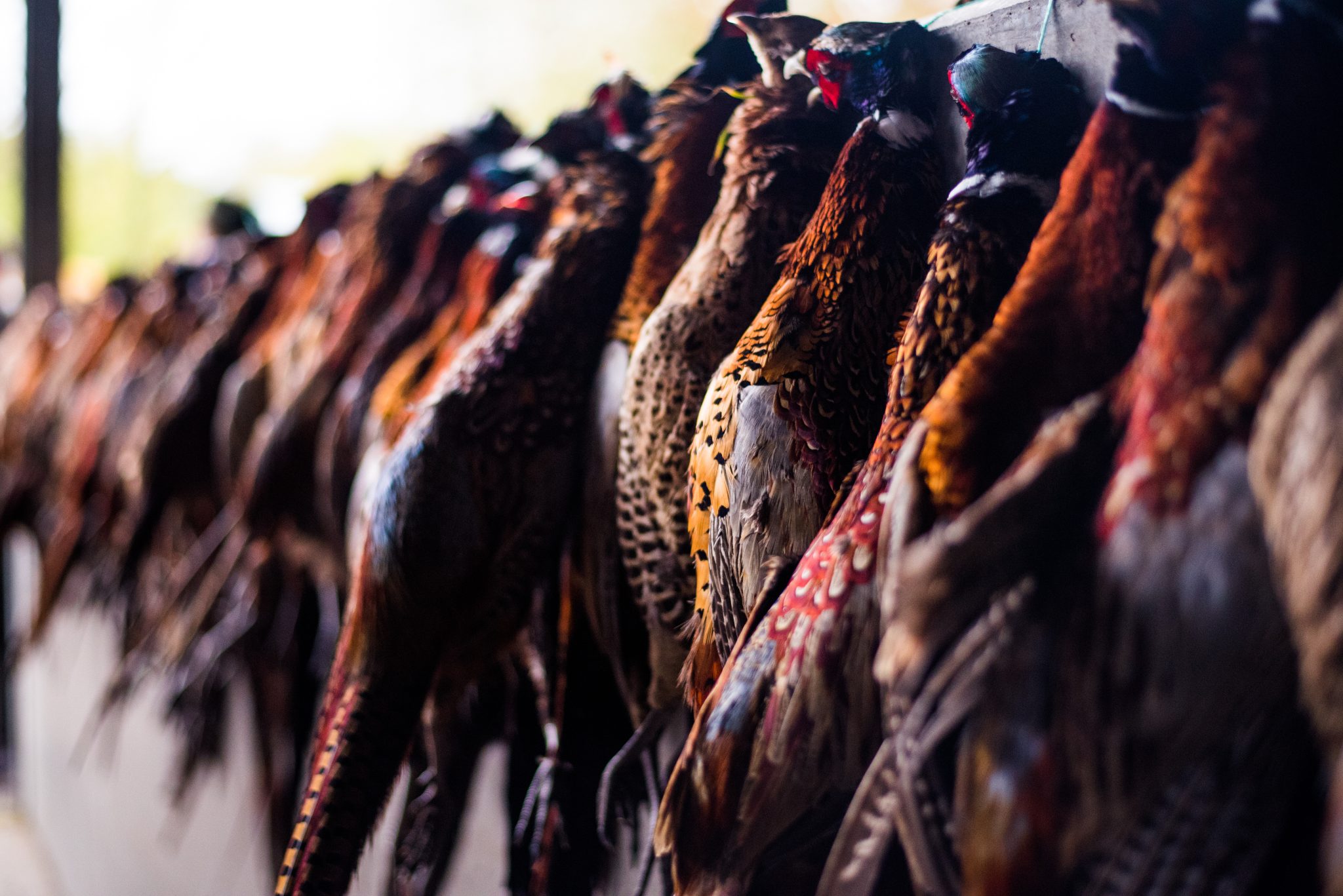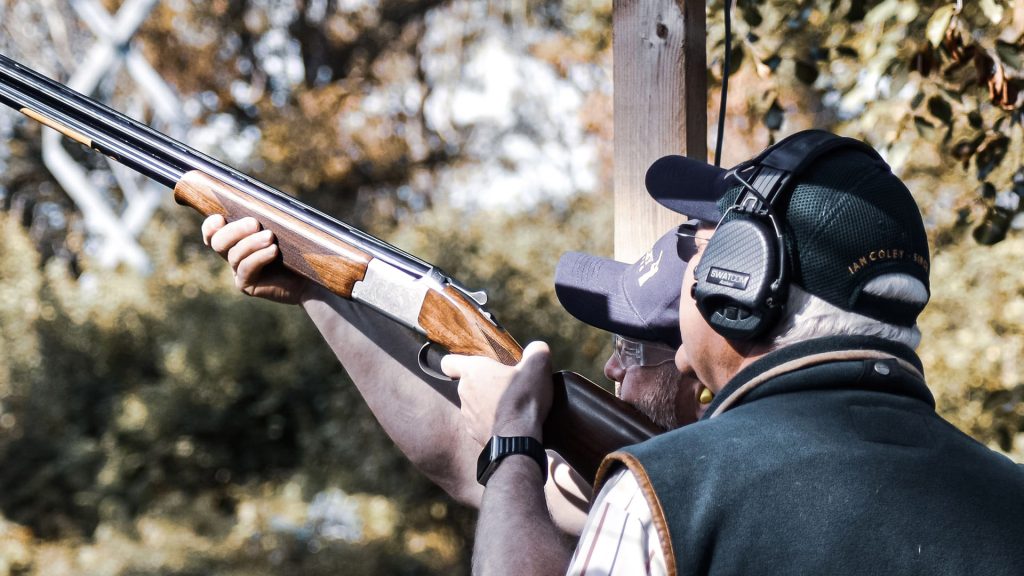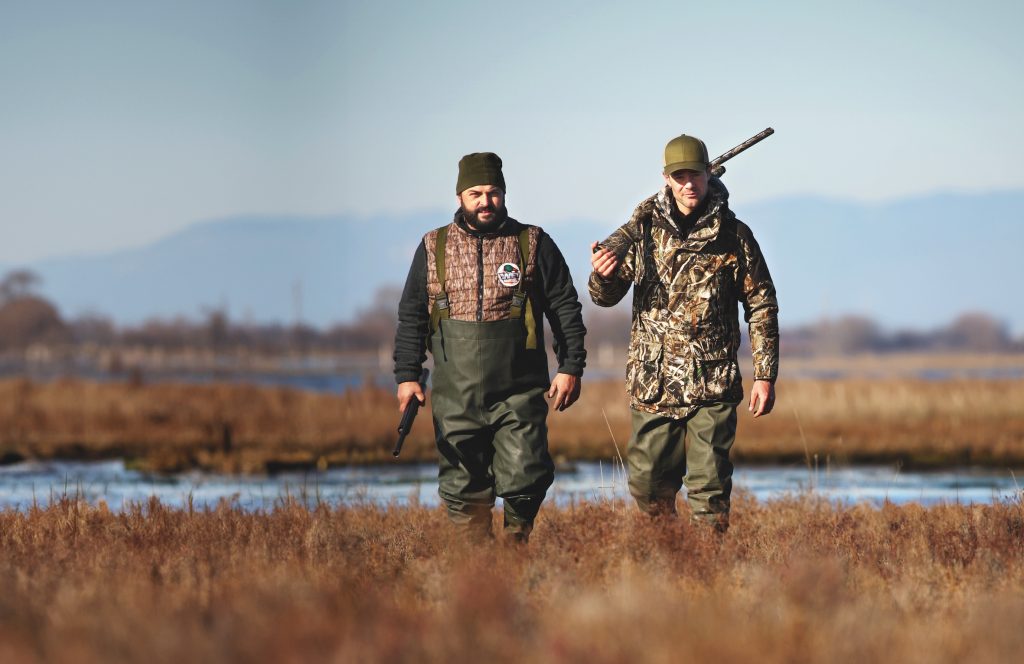Win CENS ProFlex DX5 earplugs worth £1,149 – enter here
How to get the right line for roost shooting
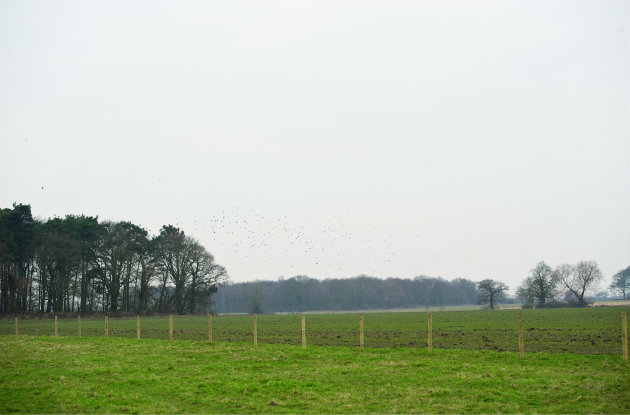
The local pigeon population has been patchy; some areas are holding massive numbers and others very few. Many of the larger farms and estates have drawn birds away from certain areas. This is common here and is mainly due to the large draw of gamecrops. Once they finish, birds tend to spread over the area more evenly.
Flightline shooting explained
Flightline shooting is when you place yourself directly under a flightline of birds going from roosting wood to their chosen food source, or from that source back to their roosting wood.
Once you have established a consistent flightline, you need to locate yourself far enough from the roosting wood so that you don’t disturb the flight, or the roosting wood itself, through constant banging.
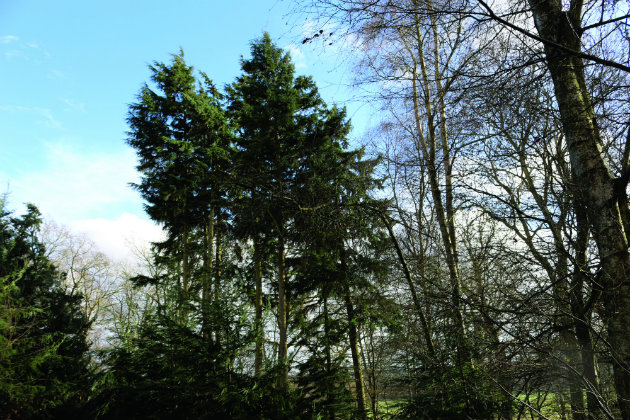
The best roosting woods are firs surrounded by hard woods. Firs provide overnight comfort
Birds coming from a distance will always provide a more successful shoot and a longer outing. For winter flightline shooting, you need windy days to break up the flocks so that they travel to their feeding ground in groups, rather than singles. A good, strong wind will also reduce the height of the travelling birds to a shootable range and hopefully keep them going all day.
Careful preparation is essential
- You must establish the main roosting wood.
- Determine the distance the pigeon travel to feed. If their chosen field is too close to the roosting wood, trying to shoot the line will be impossible.
- Don’t fall for false lines. The shooter can mistake birds coming from a smaller wood or group of sitty trees as the main line.
- You need to establish the correct place from which to shoot. Ideally, this should be straight under the main traffic of the line.
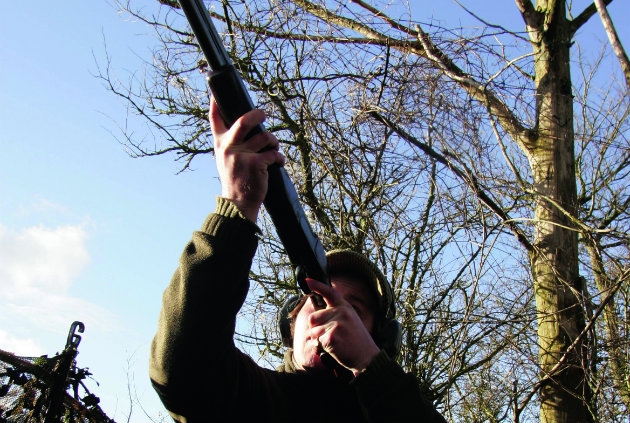
Position yourself directly under the flightline as the birds go to or from their roosting wood
Decoying
Decoying when flightline shooting can work well and is known as advanced decoying. you are aiming to draw birds to good shooting distances.
Decoying is a good idea if you are just off the line. If you are flighting birds coming
in to roost on the wood edge, it is definitely worth decoying there. This can be effective and helps to condense the line coming to the wood.
Roosting
When trying to find a good roosting wood, there are some basic principles you must follow. A pigeon likes five things:
- Good shelter.
- Warmth
- Safety.
- Little disturbance.
- Good local food supply.
If a wood covers these points, you have a roosting wood. The best roosting woods are firs that tend to be surrounded by hard woods. The pigeon has the best of both worlds in this case. The hard woods provide places to rest during the day and before roost to digest food, then a warm bed in the firs at the end of play.
Popular roosting woods tend to remain so for years. The only difference year-on-year will be in human intervention, affecting the numbers of birds that come to roost. Farming plays a huge role with regard to the crop cycles in the area for that year. As rape has become a staple diet to the pigeon in the winter months, if large acreage is grown in the area of the roosting wood, there will be larger numbers roosting. If winter wheat, for example, is the popular crop for that year, you will find that the numbers roosting will reduce. Pigeon are creatures of habit — if they find a wood they like, they will return again and again over the years.
Reconnaisance and planning
With any pigeon shooting, reconnaissance is vital. Before deciding on a plan of attack, pay a few visits to your chosen wood. You will be trying to assess four things:
1. The population of birds coming to the wood.
2. What time they start to arrive.
3. What direction they tend to favour coming into the wood.
4. Weather conditions. Wind is the priority and the stronger the better.
It is almost impossible to overstate the importance of weather— especially wind, which is the key to a successful shoot. The weather may also affect the time birds arrive and finish roosting. On an overcast, windy evening you will see birds arriving at the woods slightly earlier and finishing earlier due to the light. On clear, cold but windy evenings, birds will feed later, so may arrive later and finish later.
When walking the wood, concentrate on the density of pigeon excrement on the floor. You will notice droppings around tall hard woods first. These are a favourable first stop, before bed, to finish digesting food. The amount on the floor will give away the pigeon’s position and favourite roosting spots within the wood.
Lofting poles
Using lofting poles can be extremely affective for two reasons: to concentrate the line of flight over your chosen position and to bring the approaching birds within a good shooting range.
Placing dead birds in wire cradles attached to the top of lofting poles is effective. Break the wings of the dead birds because this gives good movement in the wind.
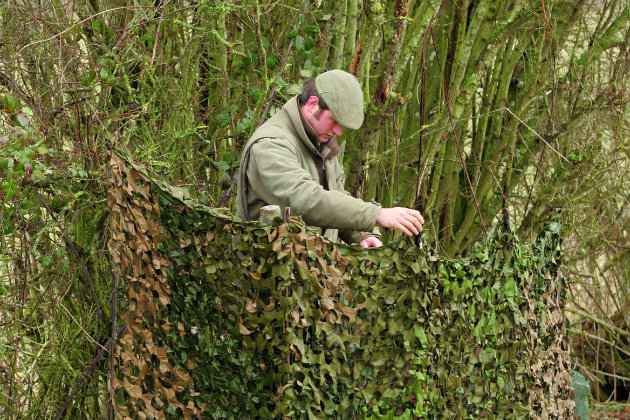
Break up your body’s outline or approaching birds will see even the slightest movement
Shooting
There are a few things that are a priority to me when picking my shooting position. I like to have a 360° arc of fire, increasing my chances of sport but also allowing me to see approaching birds before it’s too late.
Your backdrop is important when it comes to concealing yourself — you have to break up the outline of your body. If your outline is obvious, approaching birds will see any movement, however small, straightaway.
A good standing position is also important because it allows you to mark and pick birds easily; the latter is vital if you don’t have a dog.
Roost shooting is great fun and provides some of the finest sport and in many cases it is unpredictable.
Related Articles
Get the latest news delivered direct to your door
Subscribe to Shooting Times & Country
Discover the ultimate companion for field sports enthusiasts with Shooting Times & Country Magazine, the UK’s leading weekly publication that has been at the forefront of shooting culture since 1882. Subscribers gain access to expert tips, comprehensive gear reviews, seasonal advice and a vibrant community of like-minded shooters.
Save on shop price when you subscribe with weekly issues featuring in-depth articles on gundog training, exclusive member offers and access to the digital back issue library. A Shooting Times & Country subscription is more than a magazine, don’t just read about the countryside; immerse yourself in its most authoritative and engaging publication.



